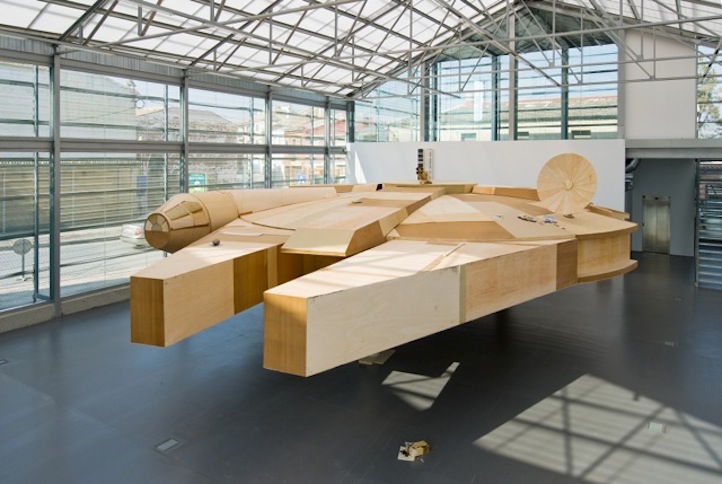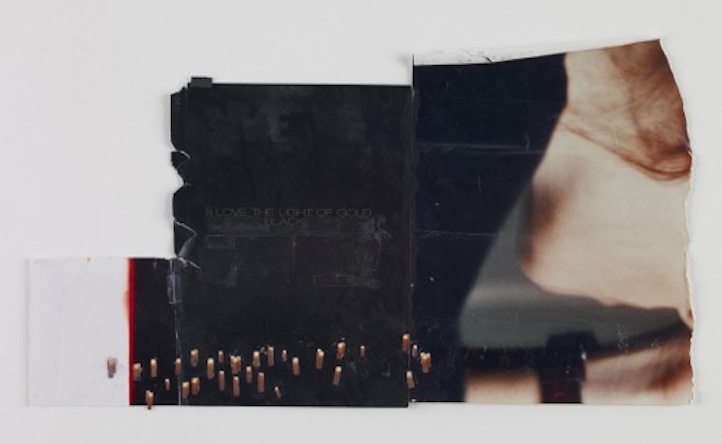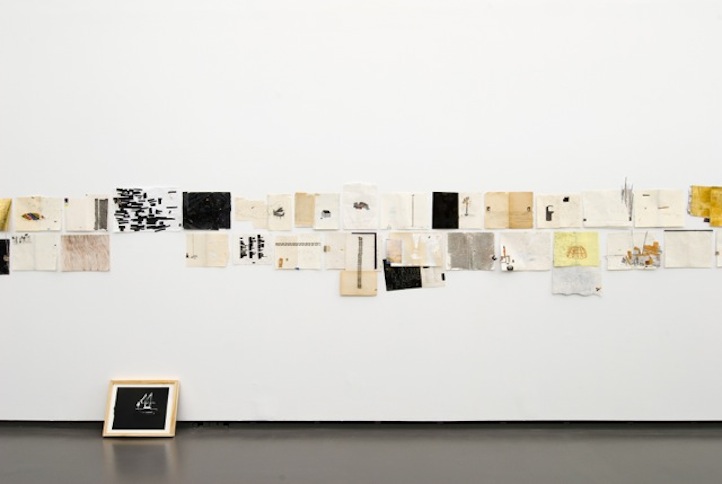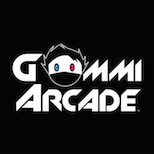American Dreamin’
11.02.2011
ART & DESIGN

Peruvian-born artist William Cordova says he has an urgent desire to create alternate perspectives. “Conscious change only occurs when we change our perspective,” he says. In November he will show “moby dick (pa’ oscar wilde, oscar romero y oscar grant)”at the DeCordova Sculpture Park in Lincoln, Massachusetts. The work is composed of a reclaimed police car, plywood, a mirror and personal items. He is working on new film projects with the Houston collective Otabenga Jones & Associates and filmmaker Monique Walton. He is also collaborating with artist Leslie Hewitt on a project for Cuba curated by interdisciplinary artist Coco Fusco. Cordova’s work was featured in the 2008 Whitney Biennial, and has been exhibited by the Nasher Museum of Art, MoMA PS1 and at his New York gallery Sikkema Jenkins.

Life+Times: How did you grow into an artist?
William Cordova: My development and discipline in the arts started while I was a child growing up in Lima, Peru. Our family had the basic necessities and so we made do with what was within our means. Creating our own cutout figures from butcher paper and empty shoeboxes were part of this development. We never thought we lacked anything. We simply grew up valuing what we did have. Early exposure to the arts is common for children, but unfortunately not often nurtured or valued by adults or institutions of higher learning. We are weaned away from cultivating a creating outlet and taught that the value and possession of currency will solve any or all problems.
L+T: What is your process like for creating work?
WC: I don’t think there is any specific way for me to develop work at all. I often gravitate to reading history, cross-referencing multiple sources until I can come to my own conclusions on any given topic. The more I understand the less there is to be confused about. The work can manifest itself through writing, drawing, sculpture or photography. There is no set template that I follow because I don’t believe that art should necessarily be a fixed recipe we follow because that creates and sets limits to our concepts. This may be the reason why so many artists think they need to buy art supplies at the art store before they even know what they are invested in conceptually.

L+T: I believe that you create work in several American cities. Does geography inform your process? What qualities do you seek in each of these locales?
WC: My first artist residency was at Brandywine Art Center in Philadelphia. That opportunity to work in an environment that was conducive to developing without disruption, much like graduate school, was a learning experience that I decided I would look into further because it allows the individual to work in a healthy manner minus the pressure of creating something commercially viable, a product! By the time I received my MFA I had already been accepted to a yearlong artist residency at The Studio Museum in Harlem. The residency allowed me to transition smoothly from two years of intense academic studies and studio practice without ever stopping or slowing down my development. This approach to residencies became part of my practice. Writing reviews, curating, organizing public projects, collaborating with diverse communities also evolved out of this practice and informed me in a manner that is kept me grounded where others may rise like Icarus. All this was possible without the need to participate in a commercial art world.

L+T: How do politics and activism inform your work?
WC: Back in the mid-1980s the Miami Dade public school system had shuffled and placed me in many different types of courses but never in an appropriate creative environment. In short, I never had the opportunity to take art classes while in school but this is not to say that I did not continue pursuing a creative outlet to express through. There was an urgency for me to draw and paste posters concerning the ills of Miami’s landscape at the time; crack epidemic, teen pregnancy, police violence, Haitian refugee deportations. My older brother, Bert, was a muralist in Peru in the early 70s and had, with friends, done many works addressing the social unrest in Latin America. Those are the earliest memories of my brother’s work, but we sadly have no documents of the many works they left behind.

L+T: You’ve investigated Latino identity in a substantial portion of your work, including the shows “untitled (chincanas)” and “More than Bilingual.” What do you want to say about this?
WC: I am interested in landscape, architecture and communities and how we define our presence. “Untitled (chincanas)” was a project that focused on the past and present as well as the future. The project was done at LA>< Art in Los Angeles, California (2010). The concept behind the project addressed continuums and parallels between Andean and African Diasporas in the Americas. Through architectural statements and cinematic gestures like the films Tupac Amaru by Federico Garcia Hurtado and Tupac: Thug Angel by Peter Spirer where the two pieces were projected as examples of past and current historical symbols that have multiple meanings depending on the observer’s source of knowledge. This work was presented as a sculpture that echoed ’70s minimalist land art in the U.S., utilizing organic materials or reclaimed materials in order to achieve a self contained space that would eventually be donated for reuse.





